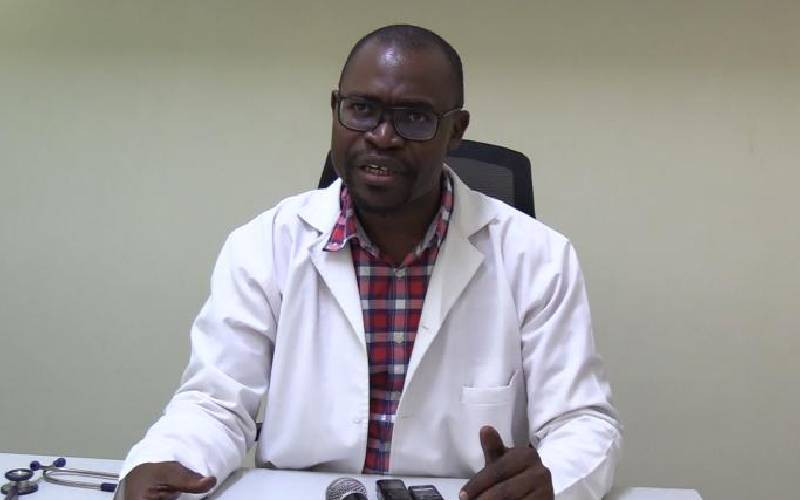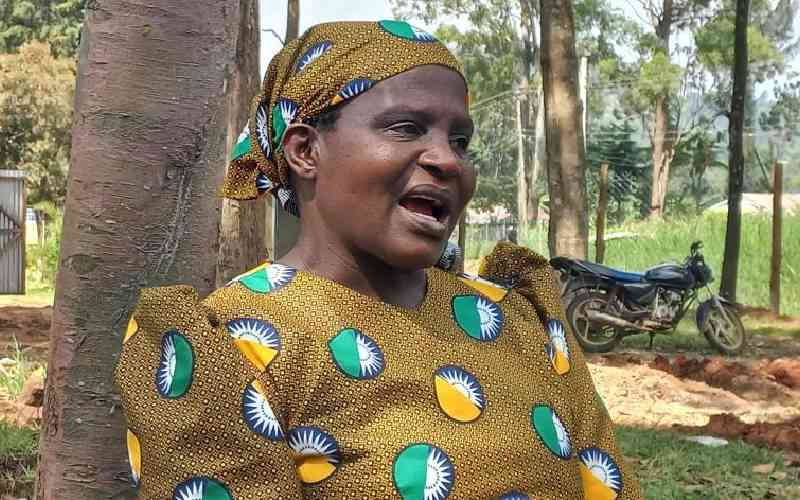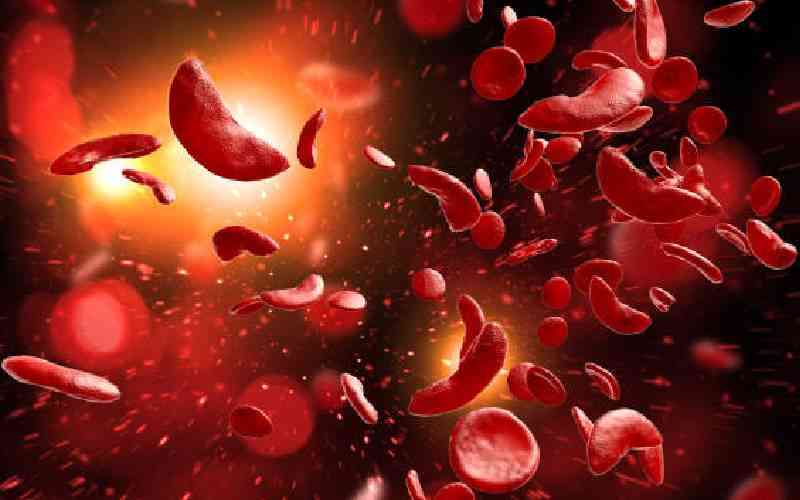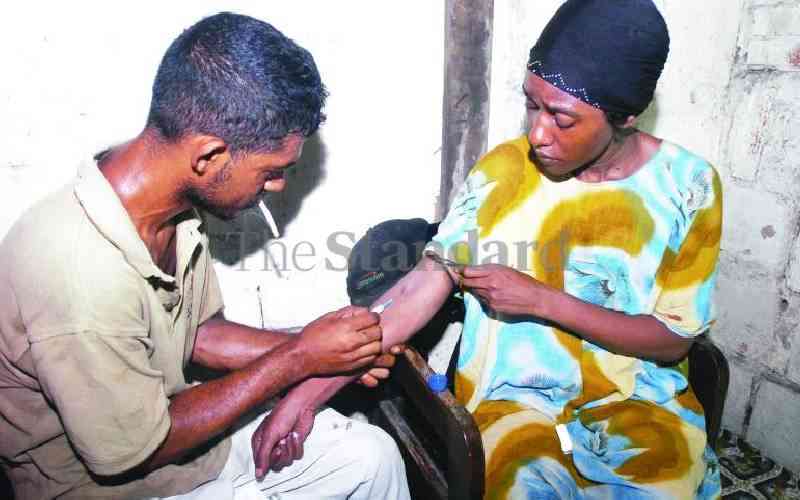
Today, the world will commemorate Sickle Cell Day (SCD).
This year's theme is "Building and Strengthening Global Sickle Cell Communities, Formalising Newborn Screening, and Knowing Your Sickle Cell Disease Status."
It serves as a resounding call to recognise the initial step in understanding and combating sickle cell disease.
In Vihiga, one family has exemplified the fact that even with a late diagnosis, one can survive and live with SCD.
The story of James Muori, a 13-year-old from Mutiva village in Vihiga County, who has been successfully managing sickle cell disease since the age of five, is inspiring.
His mother, Margaret Mukando, shares the horrifying experience her family went through when James nearly lost his life at the tender age of five.
It was a devastating ordeal for the mother of four, as her first three children were all healthy, only for James (the youngest) to be diagnosed with sickle cell anemia.
In 2015, the boy suddenly fell ill, leaving his parents bewildered as to the cause of his sickness. One day, James became extremely ill, and his mother noticed that he was not only crying excessively but also complaining of body and limb pain.
- Go for Sickle Cell screening before marriage, lovers advised
- Behind the mirth, comedian 'Akuku Danger' is a sickle cell warrior
- How mothers in Migori are battling sickle cell stigma
Keep Reading
"After returning home from work one day in 2015, I found James very sick. He exhibited symptoms resembling malaria," Mukando said.
Even after receiving treatment for three consecutive days, James showed no signs of improvement.
Initially, he was treated at a local hospital, but they were unable to make a diagnosis. His mother noticed some concerning symptoms in her child.
James displayed early signs of SCD, including jaundice (yellowing of the eyes) and periodic episodes of severe pain.
During the process of seeking treatment, Mukando was informed by fellow villagers that her son had been cursed or bewitched by evil individuals. "My son's eyes turned yellow, and it was terrifying. I received various diagnoses from villagers, some suggesting the use of traditional herbs to ward off evil spirits, while others accused my family of being cursed," Mukando shared.

Within the span of a week, the boy experienced episodes of fainting and passing blood in his urine.
One evening, when the episodes became overwhelming, Mukando sought treatment at Banja Dispensary in Hamisi.
It was at this hospital that a clinician promptly took action and referred the frail young boy to Jaramogi Oginga Odinga Teaching & Referral Hospital (JOOTRH) in Kisumu.
"By the time I reached JOOTRH, my boy was practically lifeless. He couldn't speak, and his breathing was faint," Mukando said.
Mukando continued narrating how she pleaded with the matatu driver to accelerate the Public Service Vehicle she had boarded from Gambogi.
"The journey of almost 20km felt like an eternity. I kept urging the driver to avoid any stops or picking up other passengers because I was afraid that my son would die in my arms," Mukando said.
Upon arriving at the hospital that evening, the doctors immediately sprang into action and stabilized young James. After undergoing various clinical tests in 2015, James received a diagnosis of sickle cell anemia.
Sickle cell anemia is one form of SCD, a non-communicable disease that is inherited.
To James's mother, it felt like a miracle that her son survived that terrifying ordeal.
Since then, the boy has been on medication and management protocols to cope with the lifelong illness. Due to the search for appropriate treatment and disease management, James had to miss school for nearly two years.
He is currently in seventh grade, and his mother says he is intelligent and enthusiastic about learning.
"My son is doing well. You wouldn't even know he has Sickle Cell Disease. He excels in school and is very healthy," Mukando said.
However, amidst the joy of surviving a near-death experience, Mukando partly blames herself for not being aware that both she and her husband were carriers of Sickle Cell Disease.
Medical research indicates that SCD is a genetic condition that is present from birth and inherited.
According to the Centers for Disease Control (CDC), Sickle Cell Anemia develops when the body produces an abnormal form of the protein (hemoglobin) in the blood that carries oxygen.

The abnormal hemoglobin (HbS) causes red blood cells to adopt a crescent shape, resembling sickles. These cells tend to clump together, leading to blockages in blood vessels, causing pain and tissue damage.
In this case, James inherited the condition from his parents, who, after testing, were both identified as carriers.
Dr. Frederick Okinyi, a specialist in blood disorders and a lecturer at Nairobi University, emphasises the importance of genetic counselling for couples planning to marry in order to address this genetic condition. He also emphasises the need for health facilities to be equipped to manage SCD.
"Anyone over the age of 20 who intends to have children should undergo screening and testing for SCD," Dr. Okinyi said.
He said most parents, like James' parents, are unaware of their SCD status, which puts their newborns at risk of developing the disease.
He further urges people of all ages in Kenya to get tested for SCD to effectively plan for their health.
According to Dr. Okinyi, early diagnosis and treatment are crucial, and individuals with the disease can lead full and active lives.
In Kenya, as per the World Health Organization (WHO), around 14,000 children are born with sickle cell every year, while globally, the number exceeds 300,000.
The symptoms and complications of SCD vary among individual patients.
The majority of individuals with SCD experience symptoms that can vary in severity, including mild to severe pain, swelling of the hands and feet, frequent infections, delayed growth, and vision problems.
To address these symptoms and manage the condition, infants and children with SCD typically undergo a treatment plan that includes vaccinations and antibiotics. This approach aims to prevent potentially life-threatening infections, such as pneumonia.
Western, Nyanza and Coast counties residents are classified as being at high risk of developing sickle cell diseases.
One tablet, for example, hydroxyurea, costs Sh50. The medication roughly costs between Sh3,000 and Sh3,500 a month, which is beyond the reach of many families.
Patients with SCD and medics in the field complain that the county governments have not invested well in the treatment of the disease.
Dr. Okinyi, who is also the chairperson of the Sickle Cell Federation of Kenya, advocates for the addition of drugs such as hydroxyurea to the list of essential medicines covered by NHIF.
 The Standard Group Plc is a multi-media organization with investments in media platforms spanning newspaper print
operations, television, radio broadcasting, digital and online services. The Standard Group is recognized as a
leading multi-media house in Kenya with a key influence in matters of national and international interest.
The Standard Group Plc is a multi-media organization with investments in media platforms spanning newspaper print
operations, television, radio broadcasting, digital and online services. The Standard Group is recognized as a
leading multi-media house in Kenya with a key influence in matters of national and international interest.











